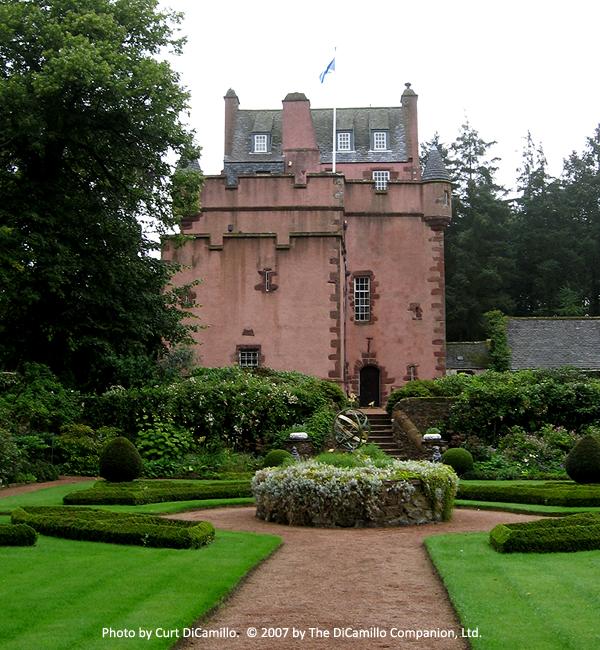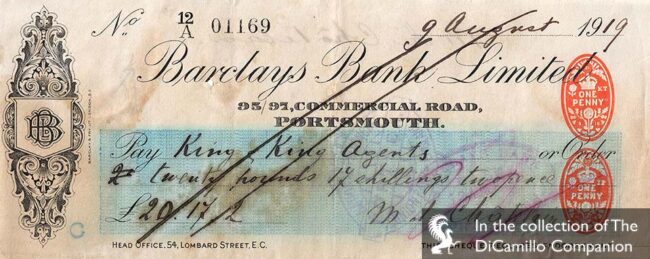
The entrance facade

The garden

A 1919 Barclays Bank check. Towie Barclay was built by the Barclay family, one whom emigrated to England in the 18th century and became part of the founding of what ultimately became the famous bank.
Earlier Houses: There was an earlier Medieval house of the Barclay family on the site, elements of which were incorporated into the current house. The Barclay family had been here since the 11th century, when they were given land in the area by King Malcolm III.
Built / Designed For: Barclay family
House & Family History: Towie Barclay Castle is an L-plan tower house built primarily in the 16th century (the hall dates from 1485) by the Barclay family and altered in the succeeding centuries. By the mid-20th century the castle, which contains the best-preserved late Medieval hall north of York, had fallen into a state of ruinous neglect. In 1969 an American by the name of Marc Ellington purchased the derelict castle and restored it as his family home. A folk singer and well-known figure in the folk-rock scene, Marc was inspired by the work he carried out at Towie Barclay to found the Scottish Traditional Skills Training Centre to encourage students to learn traditional skills such as stonemasonry, lime mortar work, and hedge-making. But the claim to fame for this historic castle comes from the famous bank whose name appears as part of the castle’s name. Barclays Bank traces its origins to 1690, when the Quaker John Freame teamed up with Thomas Gould and opened a goldsmith and banking business on Lombard Street in London. The name that ultimately became the bank’s international moniker began in 1736, when Freame’s son-in-law, the Scotsman James Barclay of Towie Barclay, became a partner. In November of 2023 Towie Barclay Castle was sold by Savills for £975,000.
Collections: Contents sold by Lyon & Turnbull on March 12, 2024.
House Listed: Category A
Park Listed: Not Listed
Current Seat / Home of: Ellington family
Past Seat / Home of: SEATED AT EARLIER HOUSE: Sir Alexander Barclay, 12th century. SEATED AT CURRENT HOUSE: Sir Patrick Barclay, 17th Baron of Towie, 1558-1624; Barclay Maitland, 18th century; Barclay family here from 11th until the 18th century. James Ogilvy, 6th Earl of Findlater, 1753-70. Marc Ellington, 1969-2021.
Current Ownership Type: Individual / Family Trust
Primary Current Ownership Use: Private Home
House Open to Public: No
Awards: Saltire Society Award, 1973.
Historic Houses Member: No